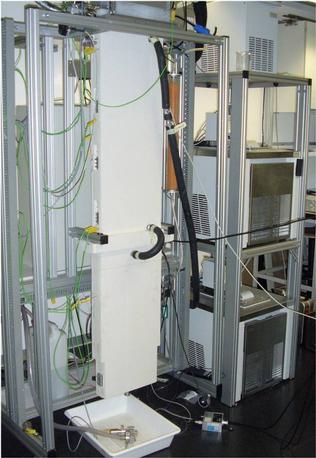ZINC
One of the first developments of our group is the ZINC chamber. With ZINC we can expose aerosols to a defined temperature and relative humidity within the chamber. These conditions simulate idealized clouds in which ice crystals can nucleate by deposition nucleation or condensation freezing. At very cold temperatures (below -38°C) homogeneous nucleation can be studied as well.

ZINC uses the concept of a external page thermal gradient continuous flow diffusion chamber (CFDC). However, some changes were made to the design used previously by the external page Colorado State University CFDC. The main chamber walls consist of two flat parallel plates with a distance of 10 mm. The walls are made of sand blasted anodized aluminum so that the ice layers on the inner surfaces adhere well and to avoid corrosion. Each wall has channels for a cooling liquid drilled into them from the outside. In the laboratory we use two powerful cryostats to control the temperature of each wall. Temperatures as low as -55 °C and relative humidities (w.r.t. water) of a bout 130 % can be reached.
Conventionally, ice formation and growth to micron sized crystals is detected with an optical particle counter at the bottom of the chamber. We can also measure in situ frozen fractions within the chamber (thanks to the parallel plate geometry) with our Ice Optical DEpolarization (IODE) detector.
Another extension of the ZINC chamber is the IMCA chamber to specifically study immersion freezing.